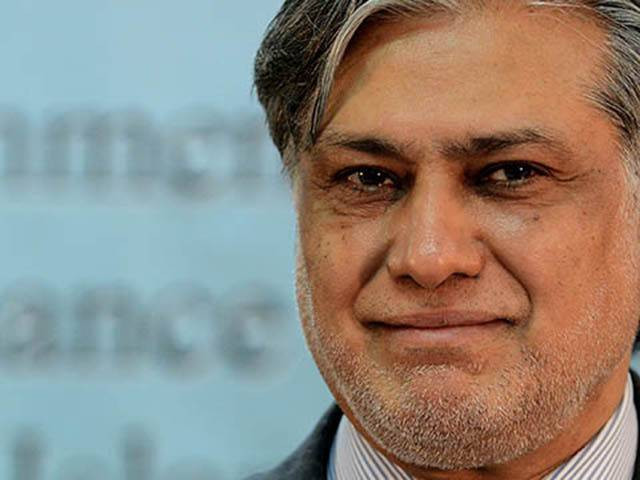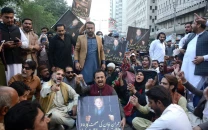Budget offers only temporary relief
Trend of increasing federal spending will not allow space for low-income group

Trend of increasing federal spending will not allow space for low-income group. PHOTO: FILE
Does the Friday budget of Pakistan address these areas in a manner that growth is guaranteed and unemployment and inflation go down with a rise to exports and industrial outputs?
Answer this question smartly and you got the light to foreseeing which way Pakistan is headed in the next fiscal year. Do not get trapped in the web of confusing figures the finance minister offered. Just see how the taxation measures impact the underdog majority as the tiny business, bureaucratic and rent-seeking minority is set to take advantage of the new budget.
Budget 2016-17: Going all-out to support agriculture sector, says Dar
New taxation and the increase in the rates of existing taxes are going to benefit the big and medium business plus the bureaucracy — civil and military. These measures indicate that the trend of increasing the federal spending is not going to allow any space for the low-income group and the majority below the poverty line.
To create a balance between the financing, employment generating and business-cost factors, the new budget has focused on agriculture and export sectors. Positive impact of tax and duty relief offered to these sectors might generate a trend of investment and employment in the farmland and export-production areas. But the budget also speaks of certain aspects that are astounding as far as the spending trend is concerned.
The finance minister revealed that the federal tax revenues increased in the last three financial years (during the Nawaz government) by 60%. The new budget offers an increase of Rs160 billion (highest in history) to the defence forces. One can ask the question about the 60% increase in the federal tax revenues. Where is the matching relief to the middle and lower income groups for paying taxes to this tune? How much tax burden would be increased solely by jacking up the defence budget by this quantum?
Rs1.8 trillion earmarked to service mountain of debt
There are taboo areas as far as budget spending on defence and debt are concerned. But it is about time the government came out with figures to dish out the most sensitive figures on this count. How much debt burden is on account of unaudited spending? How much tax burden is on account of debt servicing on the poor majority? And, how much inflation is triggered by the steep rise in the debt, spending and debt-servicing?
These three are the most important questions about the federal budget. The finance minister is not going to answer them. People of most of the undemocratic countries are deprived of the facts about these areas—the ruling cliques keep the tightest lid on these figures. The unaudited spending and the impact of debt on account of over-spending are areas the governments do not dilate upon.
Let us take a look at the budget figures now.
The GDP growth during 2015-16 remained at 4.71% (it was set at 5.1%, however, the target could not be achieved); since 9/11, Pakistan lost $118.3 billion to terror; tax exemptions cost Pakistan Rs394.5 billion (it is about 10% of the total budget—the privileged class was the top beneficiary); the July-March debt servicing was Rs1.38 trillion; agriculture growth stood at -0.19% in 2015-16, as compared to 2.5% during the last year (just imagine the impact of decline on the rural labour and the shift of population to the urban vicinities); exports have gone down to $18.18 billion; healthcare continues its downward slide.
Defence budget increase maintained as security improves
These figures reveal the actual story of the health of the economy and the impact of the slide on the poor majority. The most modern trends in budget-assessment suggest that the spending-tax-debt analysis should be based on the impact on the majority vis a vis inflation, employment and the cost of business. All viewing of the related branches of the economy depends on this analysis. In Pakistan, however, the federal and provincial budgets are viewed only on a 12-month impact basis. The trajectory of impact on inflation, debt and the business cost plus employment is not deemed important for analysis.
This way of budget assessment needs to be rejected by economists that deem overspending, unaudited spending and debt as cancer for the consumer population in the poor majority. The Rs4.42 trillion budget plans have been announced with verbal focus on facilitation of business and the lower-income group. The facilitation to business might have lasting impact in some areas. But the facilitation to the farmland, the lower-income group and the suppressed consumer would be only temporary. The increasing unemployment and inflation would eat into the perfunctory relief offered to the majority. This relief needs to be lasting; for that overspending, debt and unaudited spending need to be brought under serious check.
The writer has worked with major newspapers and specialises in the analysis of public finance and geo-economics of terrorism
Published in The Express Tribune, June 6th, 2016.
Like Business on Facebook, follow @TribuneBiz on Twitter to stay informed and join in the conversation.



















COMMENTS
Comments are moderated and generally will be posted if they are on-topic and not abusive.
For more information, please see our Comments FAQ